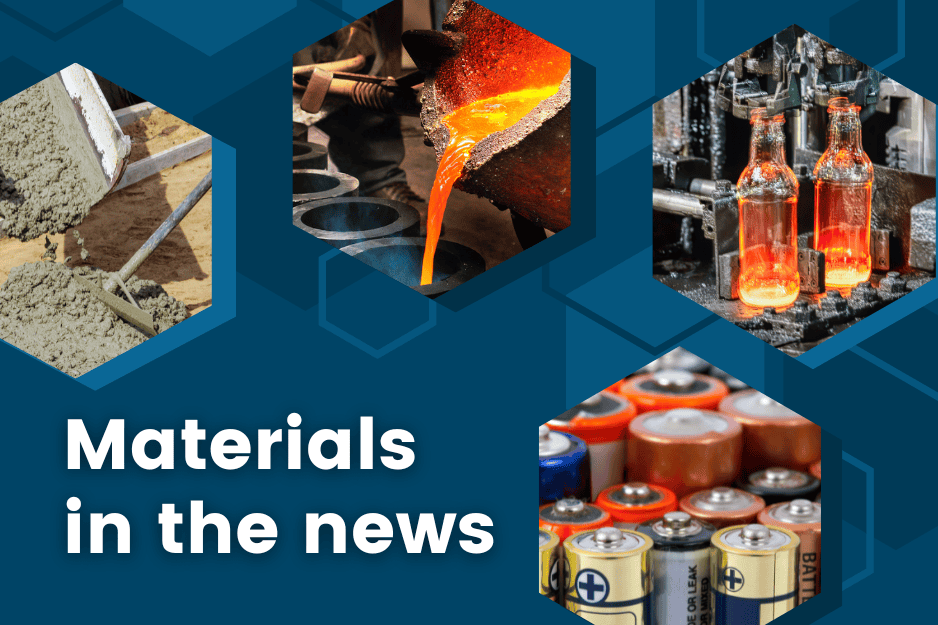
[Image above] Credit: ACerS
NANOMATERIALS
Scientists forge bismuthene and host of atoms-thick metals
Inspired by ancient techniques, researchers at the University of California, Irvine forged relatively large sheets of metal that are just atoms thick. The method can be applied to any metal with a low melting point, and the researchers have used it to make 2D sheets of bismuth, gallium, indium, lead, and tin.
Researchers from Arizona State University, Cornell University, and the University of Iowa combined artificial intelligence with electron microscopy to create detailed visuals of how nanoparticles react to different conditions.
ENERGY
Replacing silver in PV manufacturing with new graphene electrode technology
Swiss-British university spinoff GraphEnergyTech is developing graphene electrode technology to replace silver and other metals traditionally used in solar cell manufacturing.
Scientists use nanoparticles to develop longer-lasting perovskite solar technology
Perovskite solar cells could last 10 times longer thanks to new research led by the University of Surrey, which suggests alumina nanoparticles significantly enhance the lifespan and stability of these high-efficiency energy devices.
Machine learning for high-performance photovoltaics
Karlsruhe Institute of Technology researchers leveraged deep learning to identify correlations between process data and target variables of perovskite thin films. This approach allowed them to make quick and precise predictions of solar cell material characteristics and efficiency levels at scales exceeding those in the lab.
Solar-heated sand floors keep homes cozy
Researchers from Zhongyuan University of Technology and Dalian University of Technology developed a system that connects a solar–air source heat pump to a sand-based thermal storage floor. The system can sustain an average indoor temperature of 65.8°F (18.8°C) even when outdoor temperatures fluctuate between -1.1°F and 54.1°F (-18.4°C and 12.3°C).
BIOMATERIALS
3D-printed microlens can see inside blood vessels
University of Adelaide researchers created a tiny, 3D-printed microlens that can peer inside blood vessels and therefore might help prevent heart attacks. They printed the microlens, which has a diameter of less than 0.26 mm, directly on an optical fiber.
New tissue engineering strategies for spinal cord injury repair
A recent study delves into the application of tissue engineering in spinal cord injury repair, presenting a comprehensive review of the latest research and potential treatment strategies.
ENVIRONMENT
Cellular concrete may be a viable low-carbon alternative for earthquake-resistant structures
Researchers analyzed the possibility of constructing a seven-story residential building in Quito-Ecuador with cellular concrete, which is produced by incorporating a foaming agent that generates air pockets within the concrete matrix. Besides environmental benefits, cellular concrete reduces a building’s overall weight, which is advantageous in earthquake-prone areas.
Researchers show recycled lightweight concrete matches original strength
Researchers explored the potential for recycling infra-lightweight concrete elements into recycled lightweight concrete aggregates through mechanical processing and screening. They confirmed that the recycled aggregates’ quality and strength remained consistent across different batches.
MANUFACTURING
Enhanced coprecipitation method for all-solid-state battery production
Researchers at Korea Electrotechnology Research Institute developed an enhanced coprecipitation method that dramatically improves the production of all-solid-state batteries. The technology has already been transferred to Daejoo Electronic Materials Co., a South Korean company specializing in electronic materials, for commercial development.
Substrate engineering pathways to improve power electronics
Researchers from the National Renewable Energy Laboratory, Colorado School of Mines, and Oak Ridge National Laboratory proposed and demonstrated that electrically conductive, lattice-matched tantalum carbide can act as a suitable substrate for the epitaxy of aluminum gallium nitride, a key material for increasing the performance of power electronics.
OTHER STORIES
Water’s hidden side revealed—it can exist in two liquid forms at once
Researchers from the University of California, San Diego found that water, under extreme pressure and cold temperatures, can split into two different liquid phases with high and low densities, respectively. This behavior was theorized decades ago but never proven—until now.
Quantum spin model made from nanographene molecules
Researchers from Swiss Federal Laboratories for Materials Science and Technology experimentally recreated a fundamental theoretical model from quantum physics. The basis for the successful experiment, which describes a linear chain of spins, is made of tiny carbon molecules known as nanographenes.
Author
Lisa McDonald
CTT Categories
- Weekly Column: “Other materials”
Related Posts
Other materials stories that may be of interest for December 10, 2025
December 10, 2025
Other materials stories that may be of interest for December 3, 2025
December 3, 2025
Other materials stories that may be of interest for November 26, 2025
November 26, 2025